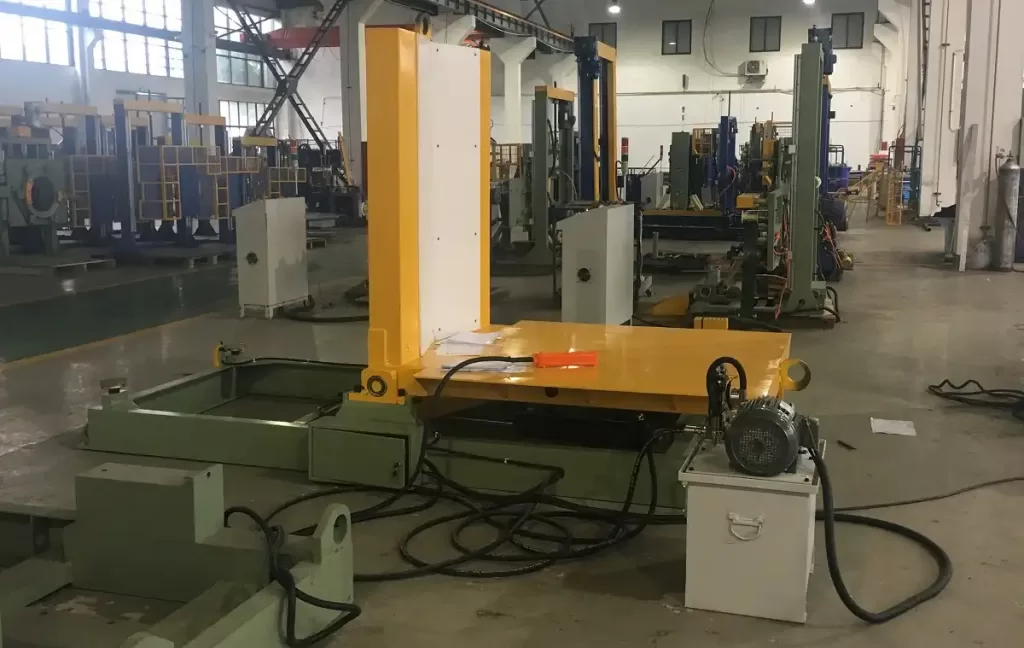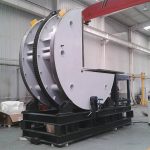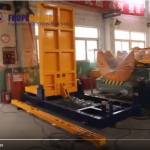Convincing Your Stakeholders: How a hydraulic Upender Benefits All Departments
- Convincing Your Stakeholders: How a hydraulic Upender Benefits All Departments
- Introduction
- 1. Understanding the Role of a Hydraulic Upender
- 2. Enhancing Production Efficiency
- 3. Reducing Workplace Injuries and Improving Safety
- 4. Boosting Quality Control in Manufacturing
- 5. Lowering Operational Costs with Automation
- 6. Easing Inventory and Warehouse Management
- 7. Strengthening Logistics and Distribution
- 8. Enabling Customization in Manufacturing
- 9. Supporting Sustainability Initiatives
- 10. Enhancing Financial Planning and ROI
- 11. Building Stakeholder Confidence with Proven ROI
- 12. Reducing Maintenance Requirements
- Conclusion: Making a Strategic Investment in a Hydraulic Upender

Introduction
In today's rapidly evolving industrial landscape, manufacturing efficiency and operational safety are paramount. Every piece of equipment is scrutinized for its contribution to these two pillars of industrial success. One piece of equipment often overlooked but immensely valuable is the hydraulic upender. This machinery, designed to rotate and reposition heavy objects, doesn’t just benefit a single department; it delivers advantages across the board, from production to finance, logistics, and safety. For stakeholders who might question the need for a hydraulic upender, understanding its multidimensional benefits is the key to making a well-informed, strategic decision.
In this guide, we’ll walk you through the specific ways a hydraulic upender benefits each department. With 10-12 comprehensive headings, we’ll break down the benefits so you can clearly present the case to your stakeholders, ensuring they see the machine's value from every angle.
1. Understanding the Role of a Hydraulic Upender
A hydraulic upender, also known as a coil upender or load inverter, is a machine that rotates or repositions heavy and bulky loads with precision. This equipment is invaluable in industries like manufacturing, steel, automotive, and warehousing, where moving large and irregularly shaped items safely and efficiently is a common requirement. The hydraulic upender operates using powerful hydraulic systems to safely lift and rotate heavy materials, streamlining workflows and reducing manual handling.
2. Enhancing Production Efficiency
From a production standpoint, time and accuracy are essential. Hydraulic upenders significantly reduce handling time and improve workflow continuity by quickly and accurately reorienting loads. This boosts productivity, as workers no longer have to struggle with inefficient, time-consuming load handling. A streamlined production process translates to higher output, faster turnaround times, and a more efficient overall operation.
3. Reducing Workplace Injuries and Improving Safety
Manual handling of heavy items is a leading cause of workplace injuries. Lifting, rotating, or repositioning heavy loads manually can result in back strains, fractures, and other injuries. By incorporating a hydraulic upender, you minimize these risks. The machine’s ability to manage the heaviest loads with minimal manual intervention safeguards employees, thereby reducing injury-related downtime and enhancing workplace safety.
4. Boosting Quality Control in Manufacturing
In industries where precision is paramount, even the smallest misalignment can compromise product quality. Hydraulic upenders allow for precise handling and positioning of materials, which reduces the risk of damage and quality control issues. For example, in the steel and automotive industries, where uniformity is critical, an upender can ensure that each load is repositioned accurately, avoiding costly mistakes and enhancing overall product quality.
5. Lowering Operational Costs with Automation
One of the primary goals of any business is to reduce operational costs. Hydraulic upenders contribute to this goal by streamlining processes and cutting down on the time required for load handling. Less time spent on manual labor means reduced labor costs and increased productivity. Additionally, by preventing damage to materials through controlled handling, companies save money that would otherwise be spent on repairs or replacements.
6. Easing Inventory and Warehouse Management
For warehouse and inventory management teams, efficient space utilization and organization are key. A hydraulic upender simplifies these tasks by allowing heavy goods to be easily repositioned and stored in optimal configurations. For example, the upender enables vertical or horizontal positioning of items, making it easier to stack or organize loads, maximizing storage space and improving warehouse efficiency.

Get Your Best Solution !
7. Strengthening Logistics and Distribution
In the logistics department, hydraulic upenders streamline load preparation for transport by repositioning goods for optimal shipping configuration. By allowing materials to be efficiently arranged, it reduces the risk of damage during transit and minimizes loading and unloading times. This not only improves shipping efficiency but also ensures that products reach their destination in perfect condition, reinforcing a company’s reputation for quality.
8. Enabling Customization in Manufacturing
A hydraulic upender offers flexibility in handling products of various shapes, sizes, and weights. This is particularly valuable in customized manufacturing, where each product may require unique handling. With adjustable controls, hydraulic upenders can be customized to handle a wide range of load specifications, giving manufacturers the flexibility they need to cater to diverse customer demands.
9. Supporting Sustainability Initiatives
For companies committed to sustainability, hydraulic upenders contribute by reducing waste. Because they handle materials more precisely, there’s less chance of damage, which means fewer materials end up as waste. Additionally, since hydraulic upenders can be part of a broader automation strategy, they help lower energy consumption, supporting greener operations and reducing a company’s overall environmental footprint.
10. Enhancing Financial Planning and ROI
A hydraulic upender represents a long-term investment that generates a solid return over time. By reducing operational costs, minimizing damage to goods, and enhancing productivity, the machine pays for itself through increased efficiency and cost savings. Financial departments can appreciate the predictability and savings a hydraulic upender introduces, as it reduces the likelihood of unexpected expenses related to manual handling injuries or damaged materials.
11. Building Stakeholder Confidence with Proven ROI
When convincing stakeholders to invest in new equipment, showing proven results is often the best approach. Presenting case studies or real-world data on how hydraulic upenders have boosted efficiency, safety, and cost savings in similar organizations can effectively demonstrate their value. By emphasizing how an upender addresses multiple areas of concern—from safety to productivity—stakeholders can see that the investment is both strategic and beneficial.
12. Reducing Maintenance Requirements
Modern hydraulic upenders are built with durability in mind, requiring minimal maintenance to remain operational. Unlike older models, today’s upenders use advanced technology to extend their service life and reduce maintenance needs. For maintenance teams, this means less downtime, fewer repairs, and a more efficient maintenance schedule, making hydraulic upenders an appealing option for sustainable, low-cost operation.
Conclusion: Making a Strategic Investment in a Hydraulic Upender
In sum, a hydraulic upender is not just a machine for lifting and rotating heavy loads; it’s a strategic asset that enhances safety, productivity, and cost-efficiency across departments. From reducing workplace injuries to strengthening logistics and supporting sustainability efforts, a hydraulic upender benefits every area of an organization. For stakeholders, the decision to invest in this equipment should be clear. It’s a long-term investment that yields significant returns across the board, aligning with both immediate needs and future growth.
By presenting a comprehensive case to stakeholders—backed by data, case studies, and a detailed understanding of each department’s benefits—you can demonstrate how a hydraulic upender is more than just a tool. It’s an essential component of an efficient, modern, and forward-looking business operation.

Get Your Best Solution !






